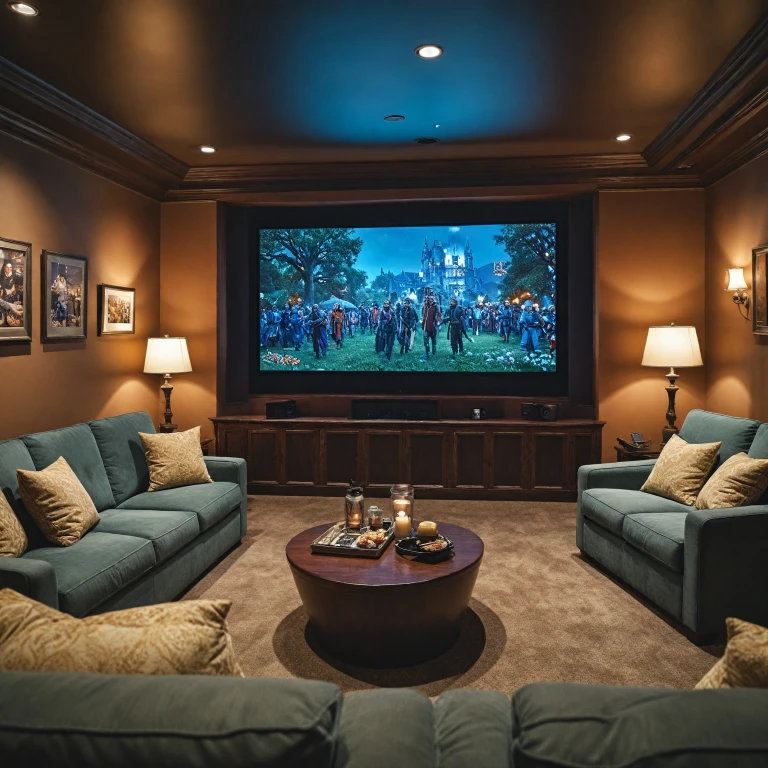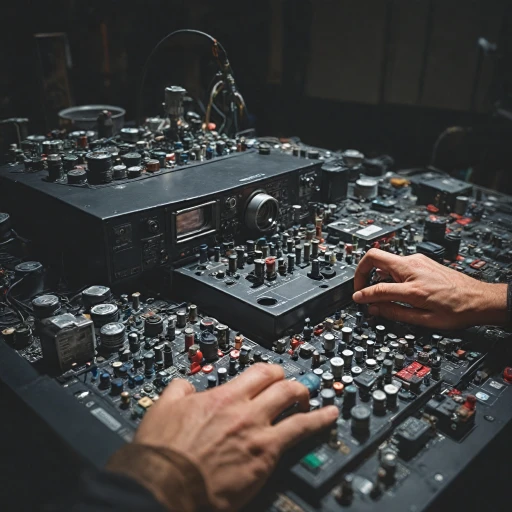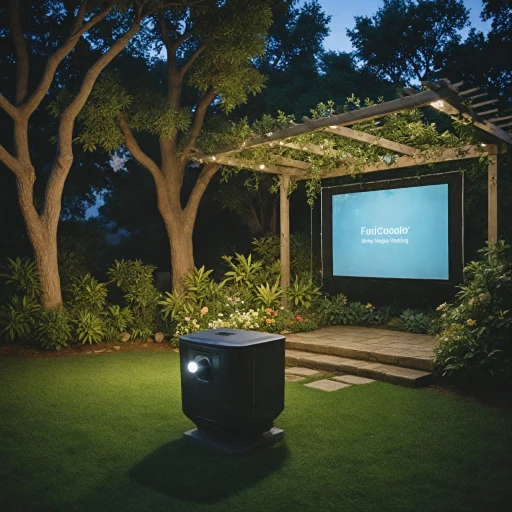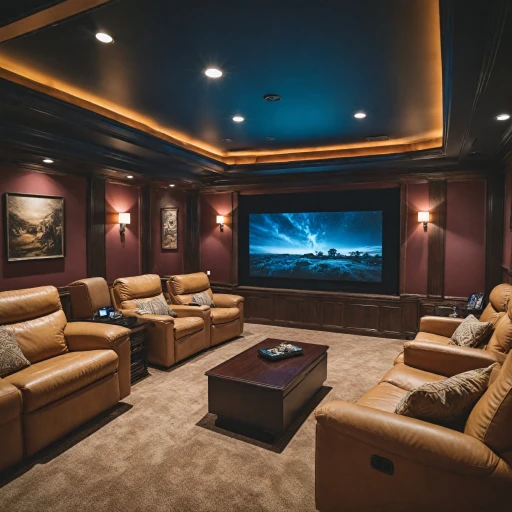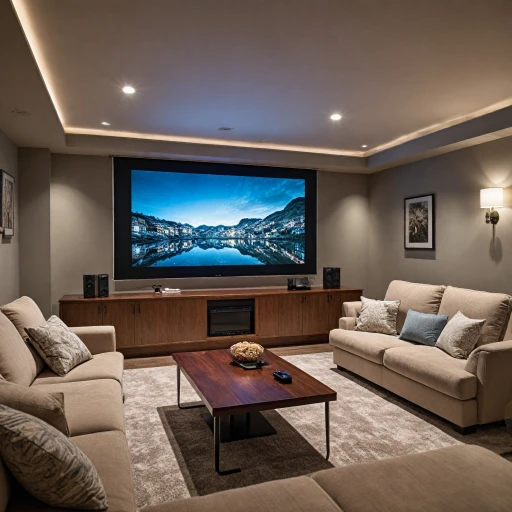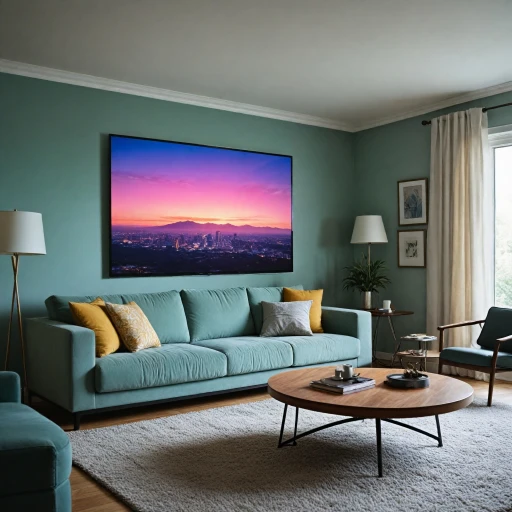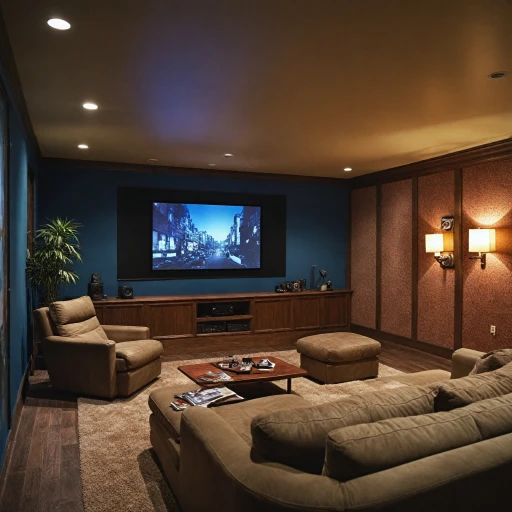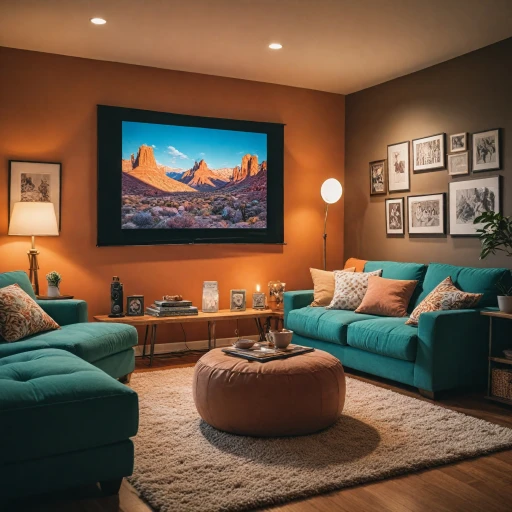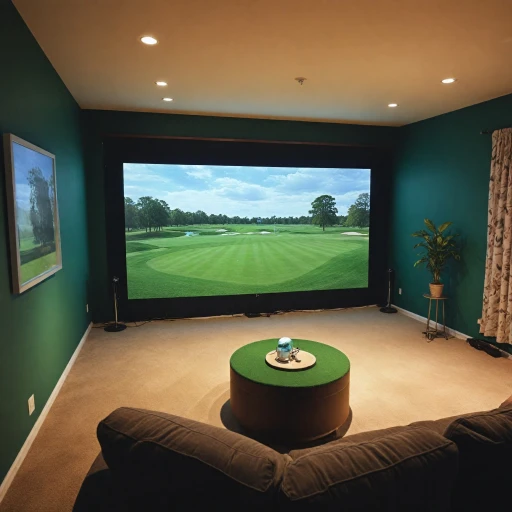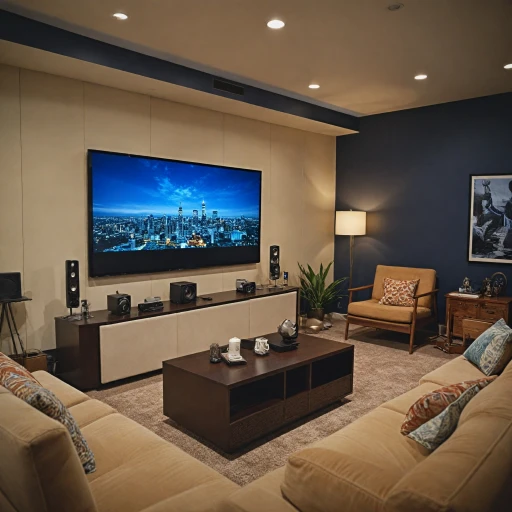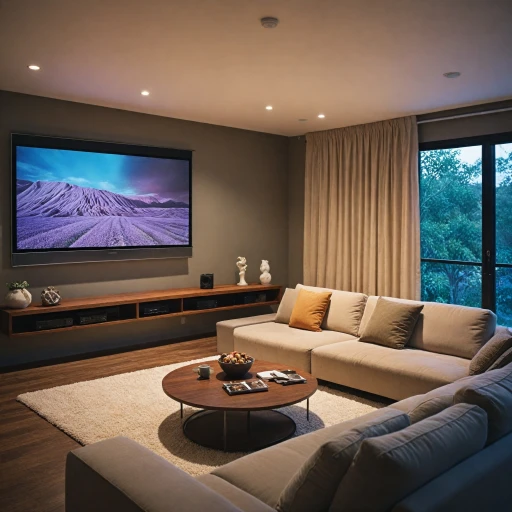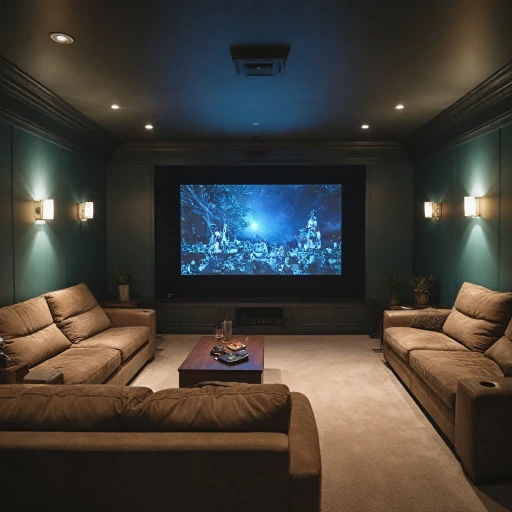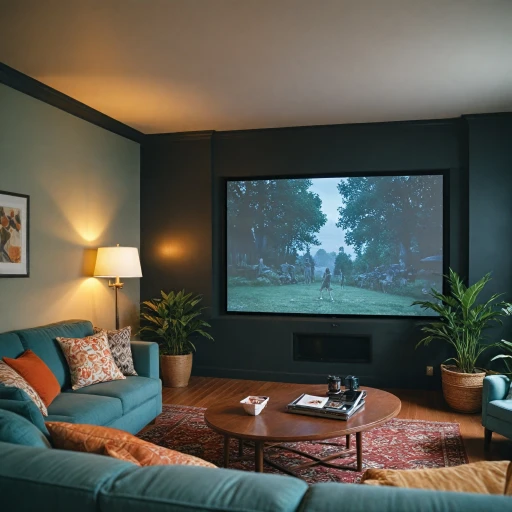
Understanding DLP Technology
The Inner Workings of Digital Light Processing
Digital Light Processing, commonly known as DLP, is a type of projector technology that has been captivating home theater enthusiasts and professional AV setups alike. At its core, DLP uses a digital micromirror device (DMD) chip which manipulates reflected light to create a picture. This chip comprises thousands to millions of tiny mirrors that tilt either towards or away from the light source, influencing the intensity of light reaching the screen.
One of the defining features of DLP projectors is the inclusion of a color wheel, which rapidly spins to alternate red, green, and blue light. By synchronizing the rotation of this wheel with the movement of the micromirrors, these projectors are able to produce a full spectrum of color, creating vibrant and high-contrast images.
DLP projectors are noted for their ability to produce sharp and high-definition images, especially beneficial for large venues or dedicated home theater setups. Their operational effectiveness is enhanced by efficient light usage, often resulting in high projector lumens output, an essential consideration for projection in varied lighting conditions. When choosing a DLP projector for home use, factors like throw projector distance, screen size compatibility, and desired resolution such as WUXGA play a crucial role.
While traditional DLP projectors make use of a lamp as the light source, advancements in laser projector and LED technology have expanded the options available, resulting in configurations like single chip, triple laser, and ultra-short throw models. Such innovations have enhanced the functionality, color accuracy, and longevity of these devices, allowing them to cater to both portable projector needs and permanent installations.
For individuals interested in understanding the cutting-edge developments in projection technology, consider exploring the enhanced viewing experience with a ceiling-mounted 4K projector, which further exemplifies the incredible potential of advanced digital projection methods.
Advantages of DLP Projectors
The Unique Strengths of DLP Projectors
Digital Light Processing (DLP) projectors offer several distinct advantages that make them an attractive choice for home theater enthusiasts. When considering the vibrant display and seamless performance, DLP technology is often favored in home theater setups.- Crisp Image Quality: The core of DLP projectors is the DLP chip, which utilizes millions of tiny mirrors to reflect light with precision. This results in a stunningly sharp and clear image projection, making films and games particularly immersive.
- High Brightness Levels: Measured in ANSI lumens, DLP projectors deliver bright images even in environments with some ambient light. They maintain image clarity and brightness, providing a satisfying viewing experience without needing to completely darken the room.
- Vibrant Colors with Color Wheel: The color wheel within the DLP technology ensures that the colors are vivid and accurate, enhancing the overall quality. The synchronization of the wheel with the projected light results in an unparalleled color depth, ideal for movie enthusiasts.
- Compact and Portable Options: DLP projectors can be relatively compact, making them a practical option for those seeking a portable projector solution. This versatility allows for various setups, from home theaters to outdoor screenings.
- Low Maintenance: With fewer moving parts compared to other projector technologies, DLP models are generally low maintenance. The sealed optical unit of DLP prevents dust accumulation, protecting the image quality over time.
Considerations for Home Theater Setup
Mastering Your Home Theater Setup with DLP Projectors
Setting up a home theater with the right DLP projector requires an understanding of key elements that can enhance your viewing experience. When selecting a DLP projector, consider factors such as throw distance, brightness, and the environment where the projector will be used. Choosing short throw projectors can be advantageous in smaller spaces, providing vibrant images without needing a long distance from the screen.
To achieve the best image quality, pay attention to the projector lumens and ansi lumens ratings. These ratings tell you how bright the projection will be, which is crucial when setting up in rooms with ambient light. If you aim for a truly cinematic experience, using a screen with enhanced reflective capabilities can complement your DLP projector seamlessly.
Let's explore some factors to consider for an effective home theater:
- Projector Lumens: Look for projectors with higher lumens if you're planning to use them in well-lit environments, ensuring crisp and clear images.
- Screen Size & Distance: Evaluate how far your projector needs to be from your screen to produce the desired image size. Options like short throw and ultra-short throw projectors are available for limited space setups.
- Image Aspect Ratio: Many DLP projectors come with adjustable aspect ratios, allowing adaptability with different media formats.
- Color and Clarity: DLP technology uses a chip dlp system that, when combined with components like a color wheel, can offer high-quality color fidelity for more lifelike projections.
Whether it's a portable projector for flexibility or fixed installation models for a dedicated theater room, DLP projectors provide a range of options to accommodate different needs. Additionally, with the advancement of triple laser technology and other light source innovations, newer DLP models like those from BenQ provide superior performance even in digital larger venue settings.
Comparing DLP with Other Projector Types
Contrast and Brightness Considerations
When comparing DLP projectors to other projector types like LCD projectors, certain factors such as contrast and brightness come into play. DLP projectors often use a combination of digital light processing and a color wheel, which yields vibrant images with deep blacks. This enhances the viewing experience, particularly in dark room settings. The light source can be traditional lamps, LEDs, or laser, each providing unique advantages in terms of color and longevity. A laser projector, for example, typically provides consistent brightness and a broad color spectrum for home theaters that demand high visual standards.
Sharpness and Detail Hierarchy
In terms of resolution and clarity, single-chip DLP projectors are renowned for their sharpness, thanks in part to the DLP chip technology. Higher resolutions such as WUXGA contribute to sharp, detailed images, essential for a high-end home theater setup. The integration with digital projection technology ensures that the images remain crisp, and projector screens can further amplify the clarity and sharpness, especially when projecting high-quality content.
Portability and Setup Flexibility
Considerations like portability and throw distance impact how and where a DLP projector can be set up. Portable projectors and models designed for short throw or ultra-short throw projection offer flexibility in various home environments. The throw projector capability allows for large screen viewing even in confined spaces, making them ideal for versatile home theater setups.
Cost Implications and Value
Finally, price plays a significant role in determining the best option for your home theater. While DLP projectors can offer high value in terms of projection quality and features, the initial investment might be steep compared to other technologies. However, their durability and low maintenance, especially models with laser or LED light sources, can make them cost-effective in the long run. The key is to balance projector lumens, aspect ratio, and chip technology to match your home theater needs.
Choosing the Right DLP Projector
Finding the Perfect Fit for Your Setup
When it comes to selecting a DLP projector for your home theater, there are several factors to keep in mind to ensure you make the right choice. Dive into the specifics of DLP technology to understand what will best suit your needs. Resolution and Aspect Ratio In the realm of projectors, resolution is key. Common options include Full HD (1080p), WUXGA, and 4K. Your choice will significantly impact picture quality, so consider what you plan to watch and the clarity required. Additionally, ensure the aspect ratio aligns with your intended use – whether it's mainly for movies or gaming. Brightness Levels Projector lumens measure the brightness. A higher lumen count ensures vibrant images, even in ambient light conditions. For home theaters, consider ANSI lumens ratings and opt for a projector that matches your room's lighting. Color and Image Quality DLP projectors excel in color accuracy partly due to their use of a color wheel. However, variations exist between single chip and triple laser projectors. A higher-end model will offer superior color representation and deeper contrasts. Throw Distance Evaluate the throw projector requirements based on your room size. Short throw and ultra short throw projectors cater to compact spaces, giving a large screen experience from closer distances. If space is a premium, explore these options for a fitting solution. Portability vs. Permanent Installation Consider whether you need a portable projector for a flexible setup or a more permanent installation for a dedicated space. Many modern DLP projectors, such as those from brands like BenQ, provide diverse options in both categories and allow versatile adjustments. Price and Value Finally, weigh the price against the features offered. Determine which elements are essential for your viewing pleasure, balancing between high-end features and cost. Consider looking at deals on digital, laser, or LED light source projectors that provide longevity and reduced maintenance needs. By focusing on these factors, you'll uncover the projector that not only aligns with your expectations of DLP technology but also enhances your home theater experience.Maintenance and Longevity
Ensuring Longevity and Proper Maintenance
Owning a DLP projector for a home theater brings the excitement of cinematic viewing right into your living room, but maintaining it ensures it stays functional and efficient for years. All projectors, including DLP models, need routine care to avoid issues.- Keep the Environment Controlled: Dust and smoke can be detrimental. Using an air purifier and avoiding smoking in the room will help maintain the projection quality.
- Regular Cleaning: The projector's lens and vents should be cleaned regularly. Accumulation of dust can affect the light and color output. Use a microfiber cloth for the lens and a gentle vacuum for the vents.
- Lamp Care and Replacement: While DLP projectors generally have a longer lamp life compared to other technologies, checking the lamp hours and using the projector in eco-mode can extend its lifespan. The average life of a traditional lamp is around 2,000 to 5,000 hours, whereas a laser light source can last closer to 20,000 hours.
- Color Wheel and DLP Chip Maintenance: Keep an eye on the DLP chip and color wheel, especially if the projector is used frequently. These components need to be functioning well to deliver vibrant projections. If there is a decline in color accuracy, check these parts.
- Calibrating the Picture: Regular calibration ensures that the projector delivers the best possible visuals. Adjust settings like brightness, contrast, and aspect ratio routinely to match the content and screen.
- Firmware Updates: Occasionally, manufacturers like BenQ release updates to enhance performance and fix bugs. Ensure your projector's firmware is up to date.
